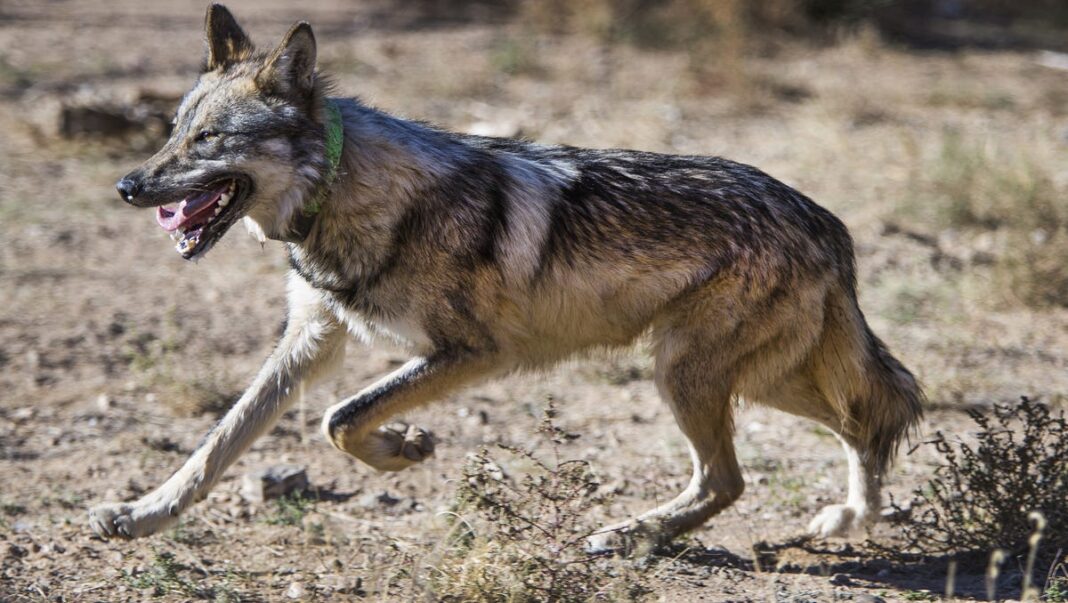Over $100K Reward Issued Following Death of Mexican Gray Wolf in Arizona
Organizations and the government are collaborating to offer a reward exceeding $100,000 for leads on the death of a protected Mexican gray wolf in Arizona.
PHOENIX — Wildlife authorities have announced a reward exceeding $100,000 for information leading to prosecution regarding the potential killing of a protected wolf in Arizona.
A female Mexican gray wolf, protected under the Endangered Species Act, was discovered deceased in a region northwest of Flagstaff, Arizona, on November 7, as reported by the U.S. Fish and Wildlife Service. While the agency has not disclosed further details on the cause of death, it clarified that “the mortality was not linked to agency management actions.”
The situation is currently under investigation, and wildlife officials are offering a reward of up to $103,500 for information that could lead to a “successful prosecution,” as stated by the U.S. Fish and Wildlife Service.
The agency has set aside $50,000 for the reward, while the Arizona Game and Fish Department and the New Mexico Department of Game and Fish each contribute up to $1,000. Additionally, various non-governmental organizations and private donors have pledged extra funds, bringing the total reward to as much as $51,500.
“Taking the life of a Mexican wolf violates both state law and the Federal Endangered Species Act, carrying potential penalties up to $50,000, imprisonment for up to one year, and civil penalties up to $25,000,” the U.S. Fish and Wildlife Service noted in their statement.
If anyone has relevant information, they are encouraged to reach out to special agents of the U.S. Fish and Wildlife Service based in Pinetop, Arizona.
Wildlife Officials Initially Documented the Dead Wolf During Summer
The U.S. Fish and Wildlife Service reported that the wolf, named F2979, was captured, fitted with a GPS collar, and released back into her natural habitat in July. She was first documented during the summer. The wolf had been seen outside of the Mexican Wolf Experimental Population Area, a designated region focusing on conservation efforts in central and southern Arizona as well as New Mexico.
DNA testing indicated that the wolf had traveled from a pack located in the experimental population area. She was subsequently spotted with another Mexican gray wolf, and plans were underway to relocate them back to the experimental population space, per the agency’s account.
The agency mentioned that these relocation efforts were still in progress when the wolf was found deceased. The whereabouts of the other Mexican gray wolf spotted with her remain unknown.
The Western Watersheds Project, a non-profit organization based in Idaho dedicated to the conservation of watersheds and wildlife in Western regions, shared images of the wolf—affectionately referred to as Hope—being observed for health checks while wearing a tracking collar in July.
“In every image we have of Hope, her collar is clearly visible. If she was shot, the shooter must have realized she wasn’t a coyote,” stated Cyndi Tuell, director of the Western Watersheds Project for Arizona and New Mexico. “If Hope was killed, severe legal action should be taken against those responsible for removing her from our human community, which drew inspiration and joy from her, as well as from the non-human community that relies on top predators for ecosystem balance.”
The Mexican Gray Wolf Population has Increased in Recent Years
The U.S. Fish and Wildlife Service has initiated conservation measures for this subspecies since 1977, beginning with a bi-national captive breeding initiative stemming from a population of “only seven Mexican wolves.” The wolves were reintroduced into their natural environment in 1998 under the Endangered Species Act.
According to Defenders of Wildlife, a conservation-oriented non-profit, Mexican gray wolves once inhabited regions ranging from central Mexico to the southwestern U.S., including areas in Utah, Colorado, and Texas.
Currently, they are found only in southeastern Arizona and southwestern New Mexico, Defenders of Wildlife stated.
In March, the U.S. Fish and Wildlife Service announced that the wild population of Mexican wolves “experienced another year of growth in 2023.” A 2023 census indicated at least 257 Mexican wolves residing in Arizona and New Mexico, marking a 6% increase compared to the 242 wolves counted in 2022.
“This increase signifies the eighth consecutive year of population growth, the longest ongoing period since recovery efforts commenced,” stated the agency.

